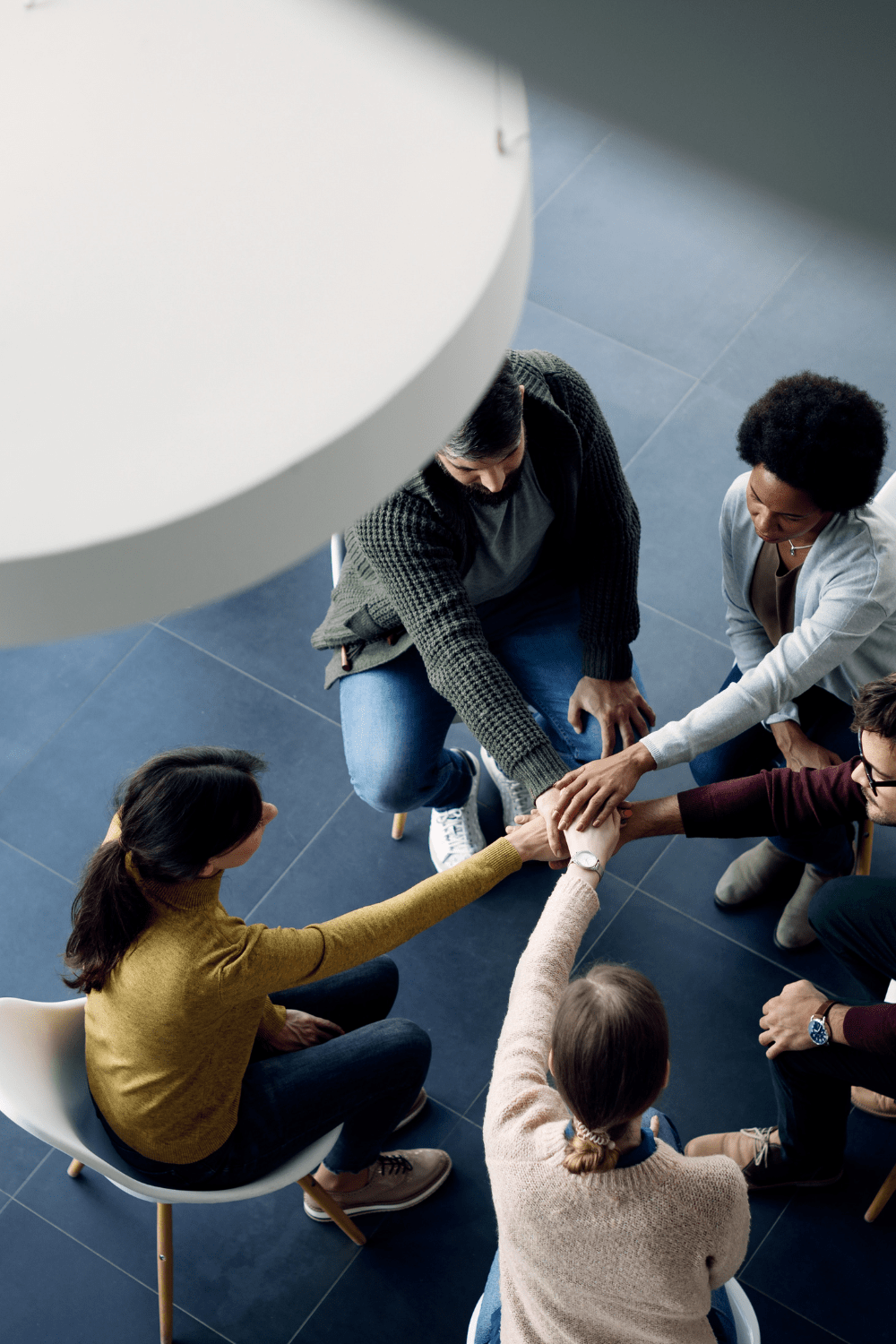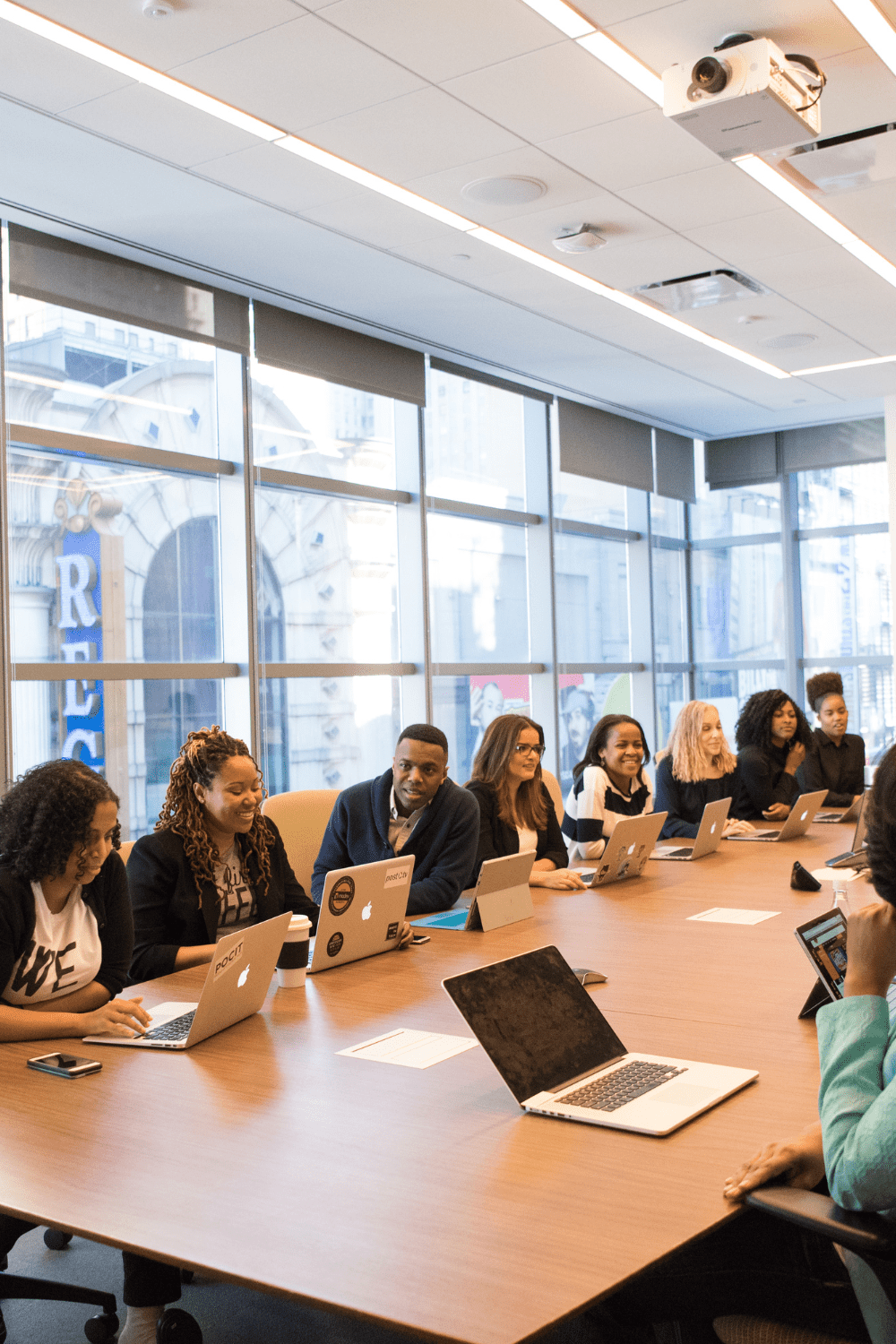Affinity Groups vs. ERGs: What’s the Difference?
If you’re reading this, you’re likely interested in fostering diversity, inclusion and belonging in the workplace. (That’s great! We are, too. 😉)
Two common types of groups to start in your organization are Affinity Groups and Employee Resource Groups, or ERGs. Let’s break down the similarities and differences of these groups so you know what’s the next best step for your organization.
The Qualities of Affinity Groups (vs ERGs)
An affinity group is a gathering or association of people who share a common interest, goal, or characteristic. These groups are often formed to provide support, networking opportunities, and a sense of community for individuals who share something in common, such as a hobby, profession, identity, or political ideology.
Affinity groups can take various forms, ranging from informal social gatherings to more structured organizations with specific missions or objectives. They can also be found in a wide range of contexts, including workplaces, schools, social movements, and online communities.
Shared Identity or Experience
When it comes to Affinity Groups vs ERGs, Affinity groups are like clubs within your workplace, but instead of being based on hobbies like knitting or bowling, they're formed around shared identities or experiences.
These can include things like race, ethnicity, gender, sexual orientation, or even shared life experiences like being a parent or a veteran. The purpose of these groups is to create a sense of belonging among people who have something in common, offering a space where they can connect, share their experiences, and feel understood
It's a place where you can be yourself, relate to others, and feel a sense of community within your workplace.
Community and Support
You may also think of Affinity Groups as a supportive circle of friends at work. They offer a safe space where you can openly discuss challenges, share experiences, and celebrate successes with others who truly understand what you're going through.
For individuals from underrepresented or marginalized groups, these groups can be especially valuable in providing a sense of belonging and connection. The support you receive can help reduce feelings of isolation, boost your self-esteem, and provide a sense of solidarity.
Networking and Professional Development
When learning about the difference between Affinity Groups vs ERGs, it’s important to recognize that affinity groups aren't just about finding friends at work; they're also a powerful tool for building your career.
Affinity Groups can provide a platform for networking with colleagues who share similar interests or backgrounds, opening doors to new opportunities and connections. Think of it like joining a club where everyone is passionate about the same thing – you're bound to learn a ton and make some valuable connections along the way!
Another great part of Affinity Groups is that they extend their networking reach beyond the company walls. Many groups participate in industry events and conferences, allowing you to connect with professionals from other organizations. This can open doors to new job opportunities, partnerships, or even just expand your professional circle.
It's like having a secret weapon in your career toolkit – a network of people who are rooting for your success and willing to help you achieve it.
Advocacy and Awareness
Affinity groups (vs ERGs) often organize events, workshops, and campaigns to educate others about their experiences and advocate for change. This can lead to policy changes, increased representation, and a more equitable workplace culture.
Feedback Mechanism
When considering an affinity group vs ERG it’s important to know that an affinity group acts as a valuable feedback mechanism for employers. They provide a direct line of communication between employees and company leadership, allowing for open and honest discussions about workplace culture, policies, and practices.
This feedback is crucial for companies that want to create a more inclusive and supportive environment. By listening to the concerns and suggestions of their employees, companies can identify areas for improvement and implement changes that benefit everyone. It's a win-win situation: employees feel heard and valued, while companies gain valuable insights that can help them attract and retain top talent.
Recruitment and Retention
Affinity groups can be a magnet for diverse talent, signaling to potential employees that a company values inclusivity and belonging. They create a welcoming environment, increasing the likelihood that diverse candidates will want to join and stay with the company.
The Qualities of ERGs (vs Affinity Groups)
ERGs are voluntary, employee-led groups within companies or organizations that are formed based on shared characteristics, interests, or experiences.
ERGs typically focus on supporting and advocating for members of underrepresented or marginalized groups within the company, such as ethnic or racial minorities, women, LGBTQ+ individuals, people with disabilities, veterans, or employees from specific cultural backgrounds.
Diverse Membership
ERGs are built on the foundation of diversity, aiming to include individuals from all walks of life. This diversity fosters a rich tapestry of perspectives, fueling creativity, innovation, and mutual understanding. ERGs celebrate differences and provide a platform for everyone to feel seen, heard, and valued.
Professional Development
When it comes to ERG vs affinity groups, both can be catalysts for career growth, offering opportunities for members to learn new skills, gain knowledge, and advance in their careers through mentorship programs, workshops, and leadership roles.
Networking and Community Building
ERGs are vibrant communities where employees connect over shared identities and interests, fostering a sense of belonging and camaraderie that's often missing in traditional work settings. These connections lead to mentorship, collaboration, and a stronger workplace community, benefiting both employees and the company.
Employee Engagement and Retention
ERGs play a crucial role in boosting employee engagement and retention. By providing opportunities for meaningful participation and contribution, they enhance job satisfaction, reduce turnover, and improve employee morale.
Inclusive Leadership
Inclusive leadership helps create a leadership structure that reflects the group's diversity, empowering members and ensure that everyone's voice is heard and valued.
This fosters a collaborative environment where all perspectives are considered, leading to better decision-making and a stronger sense of belonging for all members.
Strategic Alignment
ERGs are most effective when their goals are aligned with the company's mission, values, and DEI initiatives. A good ERG will set clear objectives, measure outcomes, and regularly track progress.
Resource and Advocacy
An ERG really is a toolbox for employees, filled with helpful resources and support. These groups go beyond just being social clubs; they empower their members and advocate for a more inclusive workplace. Imagine them as a library of information on diversity, equity, and inclusion (DEI) topics, a safe space for discussions, and a guide for navigating workplace challenges.
ERGs also act as a voice for change. They identify and address issues, promote cultural understanding, and push for policies that create a more equitable environment. It's like having a group of superheroes, each with their unique strengths, working together to build a better workplace for everyone.
For ERGs to be effective, they need the company's support. This means providing resources like funding for events, training programs, and access to decision-makers.
Leadership Support
When leaders actively champion these groups, it sends a powerful message that diversity and inclusion are valued. This support can take many forms, such as executive sponsorship, resource allocation, and clear communication of the company's commitment to DEI.
Inclusive Membership and Participation
ERGs can actively recruit diverse members, offer mentorship programs, and foster a welcoming atmosphere that encourages open dialogue and collaboration.
In an inclusive ERG, everyone is encouraged to participate, share their perspectives, and contribute to the group's goals. This diversity of thought and experience not only enriches the group but also leads to more creative and effective solutions.
Training and Development (with Access Therapy!)
In the decision to add affinity groups vs ERGs (or both!) to your organization, make sure you have wellness specialists by your side!
At Access Therapy, we understand that seeking mental health support is a vital step towards a healthier, happier life. Our comprehensive and tailored care includes multiple different therapeutic options, from anxiety therapy to depression therapy, and trauma therapy, designed to help you (and your team) navigate life's challenges.
Pair your Affinity Groups, ERGs and other groups with access to our therapy resources so you can help your team achieve emotional well-being and lead a more balanced life.
Affinity groups vs ERGs, the choice is yours! But offering therapy can be simple — with our Hamilton therapy offices!





